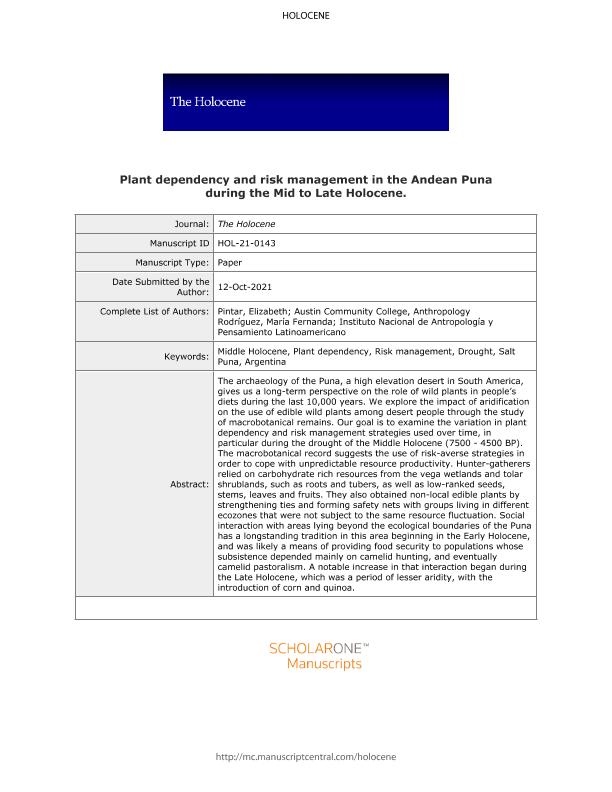Artículo
Plant dependency and risk management in the Andean Puna during the Mid to Late Holocene
Fecha de publicación:
06/2023
Editorial:
Sage Publications Ltd
Revista:
The Holocene
e-ISSN:
1477-0911
Idioma:
Inglés
Tipo de recurso:
Artículo publicado
Clasificación temática:
Resumen
The archaeology of the Puna, a high elevation desert in South America,gives us a long-term perspective on the role of wild plants in people?sdiets during the last 10,000 years. We explore the impact of aridificationon the use of edible wild plants among desert people through the studyof macrobotanical remains. Our goal is to examine the variation in plantdependency and risk management strategies used over time, inparticular during the drought of the Middle Holocene (7500 - 4500 BP).The macrobotanical record suggests the use of risk-averse strategies inorder to cope with unpredictable resource productivity. Hunter-gatherersrelied on carbohydrate rich resources from the vega wetlands and tolarshrublands, such as roots and tubers, as well as low-ranked seeds,stems, leaves and fruits. They also obtained non-local edible plants bystrengthening ties and forming safety nets with groups living in differentecozones that were not subject to the same resource fluctuation. Socialinteraction with areas lying beyond the ecological boundaries of the Punahas a longstanding tradition in this area beginning in the Early Holocene,and was likely a means of providing food security to populations whosesubsistence depended mainly on camelid hunting, and eventuallycamelid pastoralism. A notable increase in that interaction began duringthe Late Holocene, which was a period of lesser aridity, with theintroduction of corn and quinoa.
Palabras clave:
Puna Sur Argentina
,
Paleoambiente
,
Recursos vegetales
,
Riesgo
Archivos asociados
Licencia
Identificadores
Colecciones
Articulos(SEDE CENTRAL)
Articulos de SEDE CENTRAL
Articulos de SEDE CENTRAL
Citación
Pintar, Elizabeth Lucia; Rodríguez, María Fernanda; Plant dependency and risk management in the Andean Puna during the Mid to Late Holocene; Sage Publications Ltd; The Holocene; 32; 12; 6-2023; 2-33
Compartir
Altmétricas




